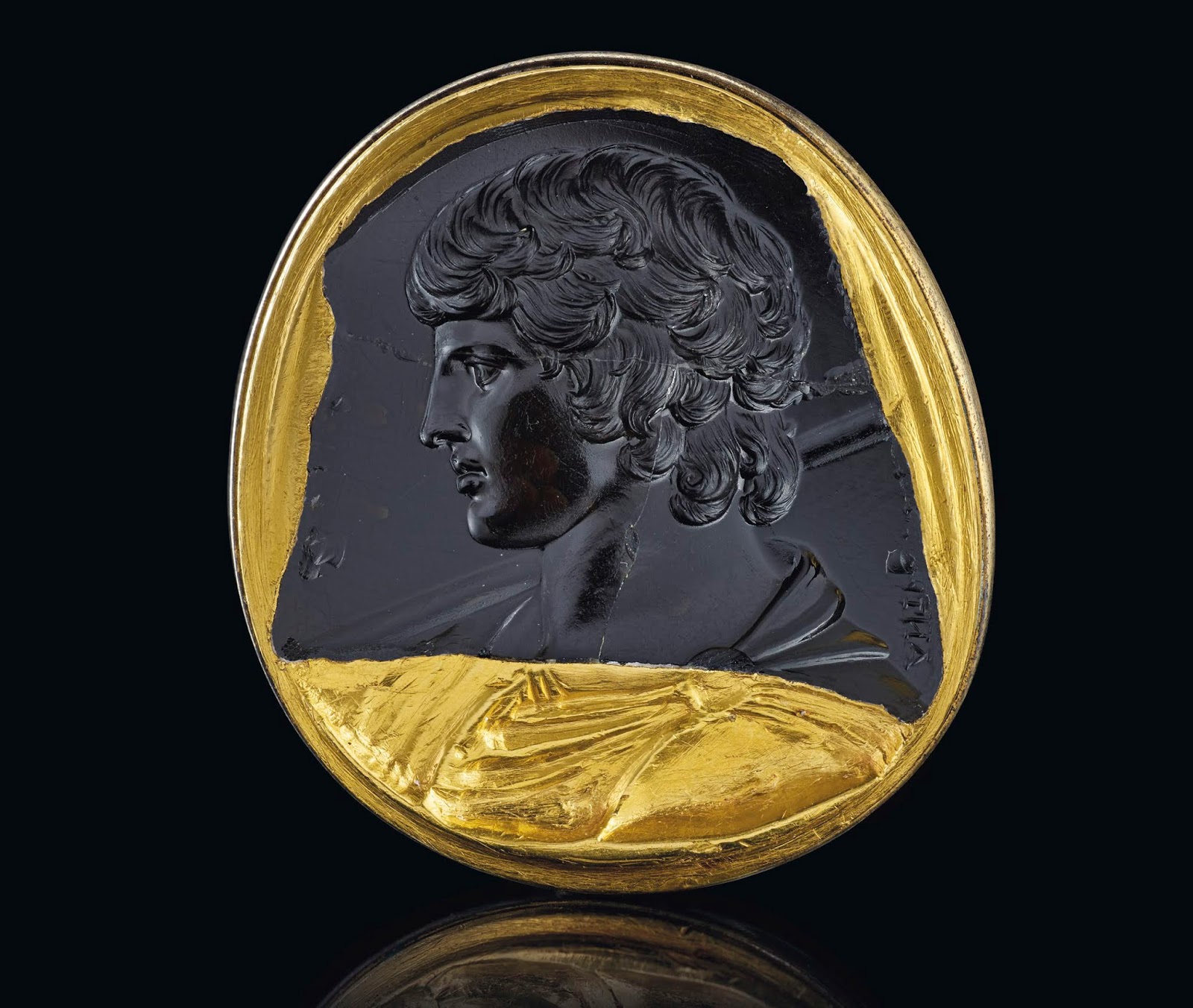Getty Buys Ancient Gems, a Palmyra Portrait
 |
| Marlborough Antinous, Roman c. 130-138 AD. Black chalcedony |
The Getty Museum spent a total of $7.94 million to acquire 17 ancient gems auctioned at Christie's New York on April 29, 2019. The sale offered 40 small though choice objects assembled by Italian art dealer Giorgio Sangiorgi (1886–1965) and held by his family in Switzerland since the 1950s. The Getty purchases included all the top lots and at least two connoisseur-famous gems: the Marlborough Antinous (which went for $2.12 million) and an amethyst portrait of Demosthenes signed by Dioskourides ($1.58 million). Both are Roman; other gems span the Minoan, Archaic and Classical Greek, and Etruscan cultures.
Antinous, boytoy of the emperor Hadrian, died in Egypt in 130 AD. His death inspired countless homoerotic portraits in ancient, Renaissance, neoclassical, and postmodern times. The Marlborough gem was probably created immediately after its subject's death. Its black chalcedony stone may have been chosen to symbolize mourning. Though a mere 1-3/8 inch across, it has been called the finest surviving portrait of Antinous in any medium. It first recorded owner, 18th-century Venetian collector Anton Maria Zanetti, boasted that he would have sold his house to obtain it. It was later a highlight of the collection of the fourth Duke of Marlborough, perhaps the greatest modern collector of ancient gems.
 |
| Dioskourides, Ringstone with a Portrait of Demosthenes, late 1st century BC. Amethyst |
Dioskourides is mentioned in Pliny's Natural History and Suetonius' Twelve Caesars. Gem carver to the emperor Augustus, he is the only such artist known both from documentary sources and surviving objects. The Demosthenes is one of eight signed gems. It was admired by Rubens, Winkelmann, and Goethe. In a 1937 monograph Sangiorgi championed it as the "most personal and strongest" of Dioskourides' works. He later described it as "the non plus ultra, the definitive object, the absolute rarity."
Timothy Potts says this group of 17 gems is the most important addition to the Villa's collection in over a decade. They will make their debut at the Getty Center in a show of recent acquisitions to open this December.
 |
| Tabloid Seal with Three Swans, Minoan, c. 16th century BC. Blue chalcedony |
 |
| Scaraboid with a Grasshopper, classical Greek, c. late 5th century BC. Yellow jasper |
 |
| Scaraboid with Perseus, classical Greek c. 4th century BC. Red jasper |
 |
| Palmyrene Portrait of Hadirat Katthina, c. 200–220 AD |
The sculpture's provenance goes back to 1940. It has since been owned by a succession of New York collector/dealers: Joseph and Ernest Brummer, Stanley Moss, and Robert Simon Fine Art (who sold it to the Getty).
The 20-inch-high stele was created for a tomb and is dated 200–220 AD. By then Palmyra was at the peak of its prosperity as a waypoint between the Roman and Parthian empires. The Aramaic inscription at upper right has been translated "Hadirat Katthina, daughter of Sha‘ad, alas!" Sha‘ad was Arabic for "luck" ("Lucky"?)
Palmyra could have used some of that luck. Roman emperor Aurelian ordered the city destroyed in 273 AD, and ISIS pulverized some of the surviving ruins in 2015.
Comments